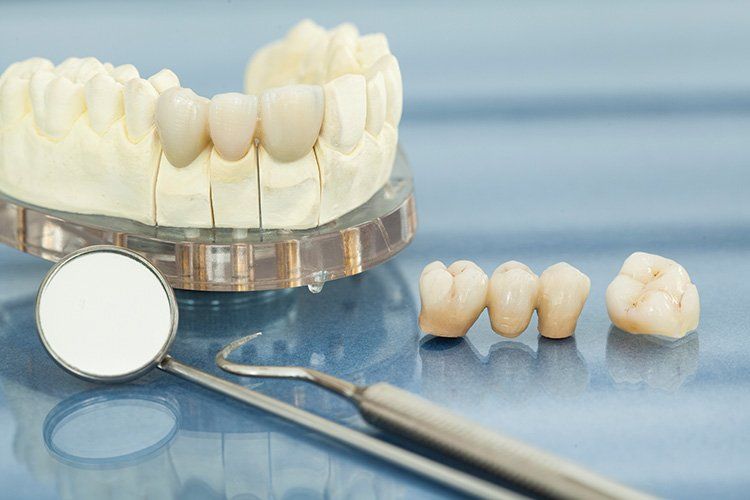Dental Bridges in Carmichael, CA
HOME / DENTAL BRIDGES
Effective Bridging of Gaps
When one or more adjacent teeth are missing, a dental bridge is placed to fill that gap. A dental bridge consists of one or more dental crowns that will be bonded to the natural teeth or dental implants on either side of the gap. A bridge can be used to replace one, two or possibly three teeth in a row. In the middle, between the two crowns, there are artificial teeth called pontics that replace the missing teeth.
A bridge is the fastest and most economical method of replacing a missing tooth. The dental bridge cost can be easier to manage than the cost of dental implants if a person is on a budget. It is also a faster process, typically taking only about two weeks to complete.
At Carmichael Smiles, we have extensive experience with dental bridges and provide bridges of the highest quality for our patients. From start to finish, we are concerned with both your comfort and your satisfaction with the result of your dental care.
Key Benefits of Dental Bridges
The primary benefit of asking your dentist to provide you with dental bridges is the aesthetics of your smile. A dental bridge will restore your charming smile and you will once again have a complete set of teeth.
Dental bridges do much more, however. They help to reduce the stress created in the mouth during biting. This is because teeth on either side of a gap suffer greater instability and stress when you bite and chew, especially if you are chewing something hard, like almonds. Each tooth supports and strengthens the teeth on either side. Filling an empty space with a dental bridge provides protection to your teeth and helps keep your teeth from loosening.
Teeth also tend to shift their positions if there is a gap right next to them. Over time, a smile with missing teeth can develop undesirable spaces between the other teeth whereas there was no space before. Maintaining a complete smile is an important way to protect the integrity of your smile.
Having a full set of teeth also helps to maintain the shape of your face. If you are missing teeth, especially if you are missing several teeth, your face can eventually begin to lose its youthful shape, sinking in toward the missing teeth. Those missing teeth can contribute to a person beginning to look older.
It’s also harder to chew when you are missing teeth. A person with missing teeth may not be able to easily chew their food as completely which can lead to digestive upsets or nutritional deficiencies.
The Dental Bridge the Process
The process of placing a dental bridge typically involves at least two visits. During the first visit, your dentist will prepare each anchoring tooth (also called an abutment tooth) so it will be ready to secure the bridge. A traditional dental bridge is anchored on abutment teeth on either side of the gap although there is one type of bridge that only requires one tooth to anchor it.
These two (or one) teeth must be reshaped or recontoured so a crown will fit over them. At this point, your dentist will take impressions of your reshaped teeth and mouth. These impressions will be used as a model for the creation of your new bridge in a dental laboratory. To protect the reshaped teeth and gums, your dentist will place a temporary bridge over the reshaped teeth and the gap between them.
The dentist also takes care to determine the exact shade of porcelain that should be used to create your new bridge. This is so your new bridge blends in perfectly with your natural teeth.
Your impressions and color information will go off to the dental lab that will manufacture your new bridge. The manufacture of your bridge is an exacting process requiring many steps to end up with a natural-looking replacement for your missing tooth or teeth. A perfect bridge fits well, matches your other teeth and has a similar translucence to natural teeth.
In general, dental bridges are most often composed of metal or porcelain, with the second option usually being preferred for its natural appearance. Some bridges utilize porcelain layers over a metal base for durability and long life while maintaining a lovely appearance.
You will be called back to the dentist’s office when the lab delivers your new bridge. During your second visit, your dentist will first try out your new bridge to ensure that it fits exactly. It might be necessary to make adjustments to its shape or size. Your dentist might reshape the bridge slightly so it fits perfectly into its place. After reshaping it, the bridge will be polished so it has the same shiny surface as the rest of your teeth. All these steps are to guarantee that you will feel comfortable with the bridge and that it will last for a long time.
Finally, when the fit is perfect and the color match is confirmed, it will be securely bonded to the abutment teeth. With proper care, you can expect your bridge to last for many years. You need only take care of your bridge as you do your natural teeth, with brushing, flossing and regular cleanings and exam appointments at your dentist’s office.
Be sure to floss under your bridge every day. This is an important step if your bridge is to last as long as possible. You will need to find an item called a floss threader in the dental department of a pharmacy. A floss threader enables you to slide dental floss under the bridge to clean out any food debris that might be trapped there.
Other Types of Dental Bridges
We have mentioned traditional dental bridges anchored to two abutment teeth and a dental bridge that is anchored to only one tooth, which is called a cantilever bridge. There is also a Maryland bridge which does not require the adjacent teeth to be reshaped. In this case, the bridge is secured with a metal framework that is bonded to the adjacent teeth. A dental bridge can also be implant-supported. In this case, a bridge with two, three or four teeth could be anchored to a pair of dental implants that are placed first.
Keeping your smile complete by replacing any missing teeth is an essential part of your routine dental care. As we mentioned, it is not just for your appearance that this is important. It is also for the strength and stability of your natural teeth and your ability to maintain a youthful appearance, and eat and talk normally.
Best Dentist in Carmichael
When you are searching online for “dental bridges near me” in the Carmichael area, you can do no better than to select Carmichael Smiles. At Carmichael Smiles, located at 6600 Madison Ave #5, our focus is on providing superior dental care in a relaxing, friendly atmosphere. We are happy to treat children, adults and seniors.
Dr. Gurkamal Sandhu and her staff are not only skilled in providing quality dental care, they also know how to keep patients comfortable, even during dental care that might be lengthy. They want you to know what is going to happen at each stage of your treatment and are concerned with keeping you as comfortable as possible throughout your care.
When you need a dental bridge, dental implants, dental crowns or just cleanings and examinations, please
call Carmichael Smiles at (916) 966-9017. We provide general, cosmetic, restorative and emergency dentistry services for the residents of Folsom, Granite Bay and Carmichael.
We are pleased to help the families and individuals of our community maintain excellent dental health with our expert support. Please call to schedule an appointment or ask questions about our services.
Call us today!
813-543-6915
OFFICE HOURS
- Mon - Fri
- -
- Sat - Sun
- Closed
All Rights Reserved | Carmichael Smiles
Website designed and maintained by Xpress, INC




